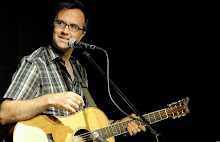Since we were basing our recording on Dock Boggs
Alec and I ended up trying a million permutations of the tune, changing the banjo tuning
Though I enjoy playing the banjo (I like anything acoustic that loud, for starters) I realize that I am a guitar player playing a banjo, and that I have not seriously checked out the body of knowledge that is banjo culture. To be honest, I don't know that I'll ever be a "real" banjo player - I think that I pretty much have to play one or the other, and I'm not ready to give up guitar yet! To complicate matters, there are four-string and five-string versions of the banjo.
The banjo has an incredible history, with origins in west African folk instruments like the akonting and banjar. Enslaved Africans in North America fashioned their own instruments, and when the blackface minstrels imitated them in the 19th century, a banjo craze began. Any survey of early recorded folk music in the American South would find the five-string and four-string banjo to be ubiquitous in both black and white musical culture. In the early part of the 20th century, the banjo was a staple of the recording industry, with ragtime 4-string banjo cylinders by Vess Ossman and Harry Van Eps selling strongly. It was also a standard part of the rhythm sections of dance bands, again both black and white.
When Eddie Lang burst on the scene with the Mound City Blue Blowers in 1925, he began to popularize the guitar to such an extent that banjos were basically gone from dance and jazz bands by the 1930s. The development of the microphone helped, and once guitars were electrified in the middle of the 1930s, the banjo was well out of fashion.
But the banjo was not to be silent for long. It had always had a strong presence in country music, and the offshoot style of bluegrass was to sustain the banjo most strongly in American music. Bluegrass music is an oddly classical strain of country music, and the strong attack and short decay of the five-string banjo sound encourage high-speed complexities and cascading chromaticisms. The four-string banjo has survived, in a more frozen form, in the "Dixieland" traditional New Orleans jazz band.
Early songsters and bluesmen like Little Hat Jones and Moses Mason used six-string banjos, tuned like guitars, on their 1920s recordings. Hot Five and Hot Seven banjoist/guitarist Johnny St. Cyr used one on pioneering jazz recordings with Louis Armstrong (in a lower-rent version of the creepy trend of using dead people to advertise products, Johnny is pictured with [a non-Deering] six-string in a recent print ad for Deering's six-string banjos). The six-string banjo is making a comeback with banjo dilettante guitarists like myself. Here's a nice talk about and demonstration of a six-string.
I think I need one












Excellent article! I'd just want to say that I think 6 string banjos are pretty much a joke as they don't feature the high 5th string as a drone and really, that is THE most important aspect of the instrument-much more than the sound itself as derived from the way the head/bridge etc. are constructed. This is the mistake guitar players who pick up the banjo often make. It's easy enough to do some fingerpicking or even to use a pick do do some single-note lines but, unless one gets the 5th string involved, it's going to be missing a huge part of what the banjo has to offer. This is why it's important to acquire a little bit of banjo technique-either clawhammer (frailing) which can be learned quite quickly, or some rolls/patterns in the right hand that are real banjo things. Dock Boggs only used a few relatively basic but highly effective patterns to make his incredible music. My two cents!
ReplyDeleteThanks, John. I just adapt my Travis picking chops, which aren't bad, to the banjo. I fleetingly tried some real rolls out of a book and I just didn't have the patience. I find the 5th string frankly vexing.
ReplyDeleteLiving here in Toronto has it's benefits-I was able to get lessons from Jayme Stone (all-around banjo expert) and then Chris Coole (world-class clawhammer guru) and that made all the difference. Just please stay away from those dang 6-string banjos please! All the best-
ReplyDeleteJohn, I dig what you say. But I still want to play "Day Tripper" on a banjo.
ReplyDelete